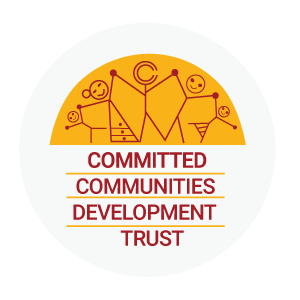Celebrating unsung heroes living in vulnerable slum communities that banned together to safeguard their children and communities
Every time more than 100 girls and women inhabiting the Shivaji Nagar slum in Dahisar West in Mumbai chose to use the community toilet in their vicinity, they were left in the dark—quite literally. Lack of lighting and loosely fitted doors made the experience both uncomfortable and embarrassing. This was more than two years ago. Today, the conditions have improved vastly, thanks to the involvement of women volunteers from the community who were determined to have clean, safe and hygienic community toilets.
This inspiring story was facilitated by Committed Communities Development Trust’s (CCDT) team that addresses concerns of safety and protection of children from abuse and exploitation — through access to services and the active participation of community members. CCDT in partnership with UNICEF runs a program in this Dahisar slum that aims to evolve a model of ‘Safe Communities’ for children living in cities.
Payal Gund, a mother of two, who has been volunteering with the program since its inception, led a group Community Child Protection Committee (CCPC) members to launch an awareness campaign in order to bring transformation to the deplorable state of toilets in this neglected ghetto colony. Thanks to their efforts, the toilets now have doors, are properly lit and well maintained.
“I have two small children and their safety is always at the back of my mind”, shares Payal Gund. “Earlier, substance abuse used to be rampant in our community. Addicts were occupying open spaces, like playgrounds and community areas that our children were also using to play. There weren’t any lights around the maidan and these dark spaces were being used for smoking, doing drugs and other illicit activities. We all felt the need for making these spaces safer, but didn’t know where to start. Then CCDT invited concerned parents and children from the community to come together and form a Community Child Protection Committee (CCPC). This committee would meet regularly and discuss issues of safety in our community and how to solve them.”
“Many parents didn’t understand the seriousness of the drug problem and how it could impact our children. So CCDT held sessions for parents in the community on the effects of drugs on their children. I learned that I needed to counsel my boys too – to prevent them from getting into drug abuse. I also learned about child rights, child protection, child sexual abuse, and laws related to children during the meetings and workshops for the CCPC members.”
“When a young girl in our area was raped, I was able to support the family when they wanted to register a complaint. I called CHILDLINE helpline (1098) and told them what happened. I also went with the family to the police station to register the case. We also supported the family in court, made sure that the girl did not come in contact with the accused and now he is in jail. The girl and her family were then counseled with CCDT’s help.”
Payal, is just one of the many women living in this Dahisar slum ghetto colony that have taken their community’s safety into their own hands. “As a community, we were able to take positive action and so all of us now feel stronger and empowered”, shares Payal. “By working with CCDT, I have learned one thing — just making sure that my children are safe is not enough. All the children in my lane, in my community must be safe — only then will my children be really safe. And it is my responsibility, our responsibility, to make sure that every child is safe.”
To address the issue of addiction, CCDT’s Child Protection Committee (CPC) along with Jeevan Dhara- De-Addiction Center organized a ‘Stop Addiction’ Campaign in Shivajinagar. Community Child Protection Committee (CCPC) members along with their children participated in a morcha to raise community awareness about the issue of addiction.

Stop addiction morcha
CCDT also facilitated a poster exhibition within Shivaji Nagar to enhance community awareness about types of addictions, repercussions and how to prevent addiction among children.

Poster Presentation
Children participated in a drawing competition that allowed them to share their own understanding of addiction.

Drawing her concept of addiction


Recent Comments